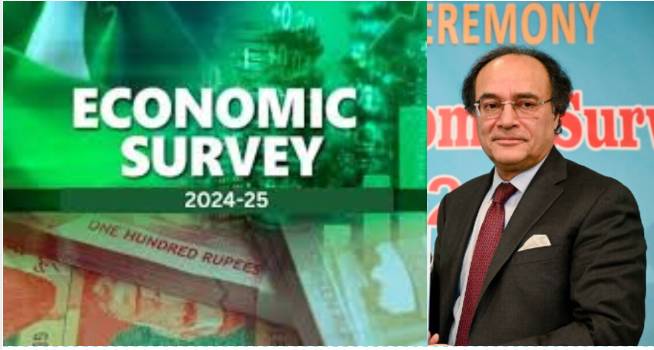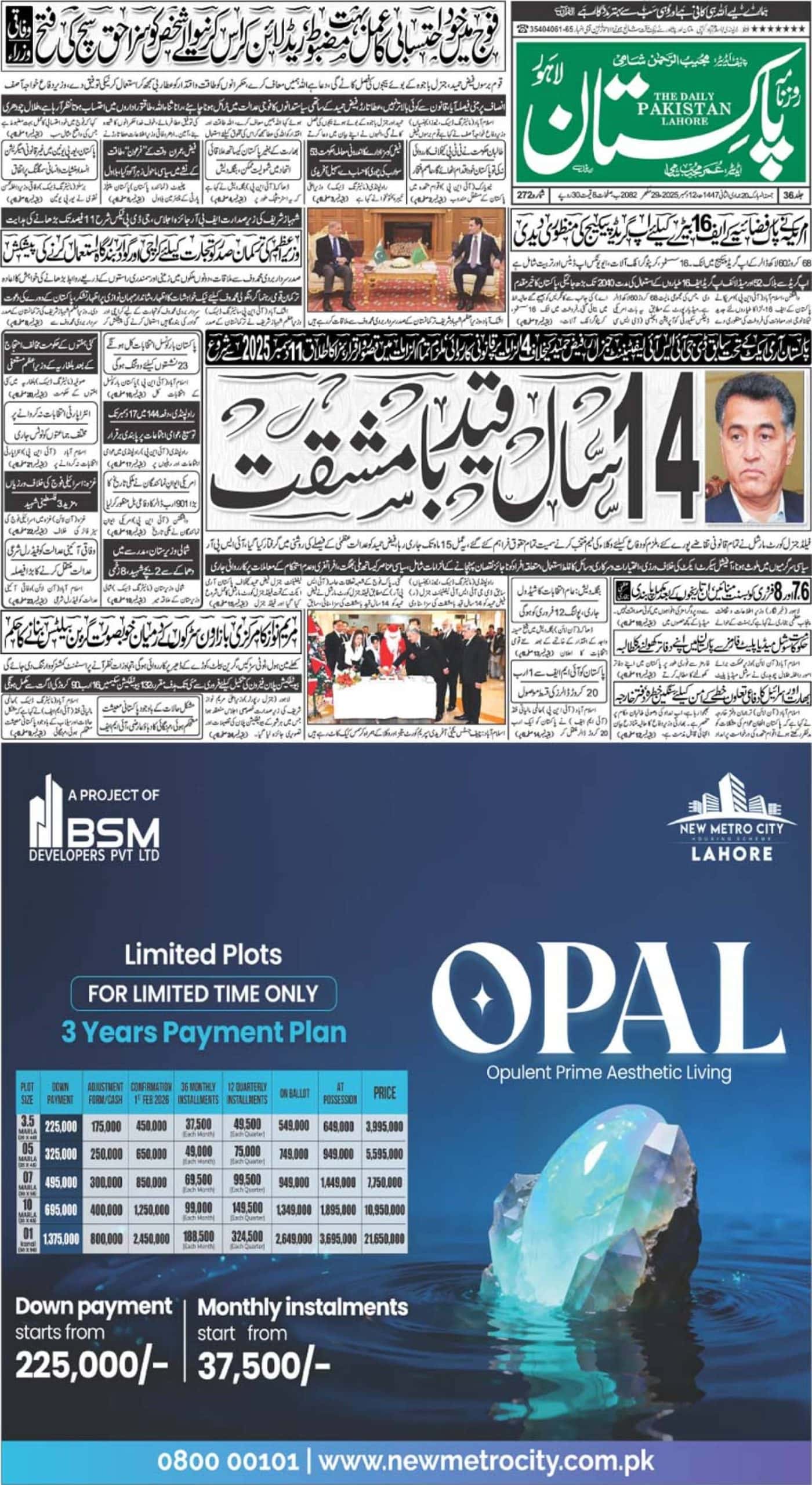In a year shaped by delicate political transitions, post-crisis stabilisation, and cautious fiscal manoeuvring, Pakistan’s economy appears to be catching its breath. According to the Economic Survey for FY 2024–25, the country posted a 2.7% real GDP growth rate, missing its initial target of 3.6%. The reasons are well-documented: disappointing performance in agriculture and large-scale manufacturing, fragile domestic demand, and supply-side bottlenecks.
But beyond the missed target lies a deeper story: the return of macroeconomic composure. Stabilised inflation, a surprising current account surplus, improved foreign exchange reserves, and declining public debt collectively form a picture of renewed financial confidence. Whether this momentum can be converted into sustainable growth, however, remains the pressing question.
After enduring two consecutive years of economic distress marked by a steep depreciation of the rupee, double-digit inflation exceeding 26%, and dwindling foreign reserves, Pakistan has managed to engineer a semblance of macroeconomic calm. The State Bank of Pakistan brought the benchmark policy rate down to 11%, reflecting significant disinflationary progress. Inflation currently hovers around 4.6–4.7%, aided by administrative controls, currency stabilisation, lower commodity prices, and better food supply chain management. Crucially, the country achieved a $1.9 billion current account surplus between July and April 2024–25—an astonishing reversal from last year’s $200 million deficit. This surplus was made possible by booming remittances, which hit a record $34.9 billion, alongside tightened controls on non-essential imports.
Fiscal indicators also show improvement. Pakistan’s public debt-to-GDP ratio has fallen from 68% to 65%, and the consolidated fiscal deficit is projected to close at 5.9% of GDP, down from over 7% two years ago. This turnaround is attributed to restrained government spending, increased petroleum levy collections, and improvements in non-tax revenues. The IMF’s ongoing Extended Fund Facility (EFF) has played a catalytic role, enforcing spending discipline, enhancing transparency in subsidies, and encouraging central bank autonomy. Together, these measures have helped restore international market confidence, giving Pakistan the breathing space it needs to recalibrate its economic strategy.
Looking forward, the federal government has set an ambitious GDP growth target of 4.2% for FY 2025–26, based on a stronger rebound in agriculture, a revival in manufacturing, improved fiscal management, and increased development spending. Sector-wise, the government expects agriculture to grow by 4.5%, large-scale manufacturing by 3.5%, and services by 4%, with spillovers into allied sectors like construction and retail. These targets are built into the newly announced federal budget, which seeks to simultaneously lower the fiscal deficit to 3.9% of GDP and increase revenue collection by more than 14%.
This optimism is not entirely unfounded. Agriculture is expected to benefit from improved water availability, enhanced seed and fertiliser supply, and targeted subsidies under the Kisan Package. A modest rebound in LSM is projected, driven by improved electricity supply, lower financing costs, and a slight uptick in domestic demand. The services sector, already showing signs of resilience in IT exports and banking, is anticipated to gain further momentum. However, the projections are also contingent upon one primary variable—successful reform implementation.
A key element of the growth strategy is the expansion of Pakistan’s chronically narrow tax base. Currently, only 1.3% of the population pays income tax, and major sectors such as agriculture, retail, and real estate remain under-taxed or entirely outside the tax net. To address this, the FY 2025–26 budget introduces new taxation measures, including the documentation of real estate transactions, a tax on agricultural income above certain thresholds, and retail digitisation through point-of-sale integration. These reforms are expected to generate an additional Rs. 1.5 trillion in tax revenues, which will be critical for sustaining both development spending and IMF compliance.
However, the road to reform is fraught with institutional resistance, weak enforcement capacity, and political backlash. Past attempts to bring informal sectors into the tax net have failed due to lobbying, administrative bottlenecks, and a lack of political will. If the proposed tax measures are diluted or reversed—as has often happened in election years—the fiscal improvement may prove short-lived. A failure to execute will not only jeopardise IMF disbursements but also force the government to resume domestic borrowing or cut critical expenditures, undermining long-term development goals.
Pakistan’s stabilisation success is also tied closely to external factors. The return to a current account surplus was aided not only by import contraction but by strong global remittance flows—driven in part by favorable exchange rates and diaspora confidence in formal banking channels. The downside is that this balance could be disrupted if oil prices rise again or if global growth slows. Ongoing geopolitical tensions in the Middle East and the Red Sea region could increase the cost of energy imports and destabilise trade logistics, with knock-on effects for inflation and reserves.
Meanwhile, the country’s export base remains narrow and commodity-dependent, making it vulnerable to fluctuations in global demand. Despite improvements in IT exports and textile recovery, the broader manufacturing sector remains underinvested and poorly integrated with global value chains. Investment inflows, though recovering, remain tepid. The government’s much-publicised Special Investment Facilitation Council (SIFC) has begun coordinating large-scale investment projects, especially in agriculture and minerals, but tangible results will take time to materialise. Without sustained foreign direct investment (FDI) and technological upgrading, Pakistan’s capacity to meet and exceed its growth targets will remain limited.
Despite the challenges, Pakistan’s current macroeconomic footing provides a rare window of opportunity. The convergence of declining inflation, currency stability, better current account performance, and credible international support allows the country to reset its economic fundamentals. If the government can utilise this stability to implement long-overdue structural reforms—particularly in taxation, public sector enterprises, energy pricing, and the investment climate—it could lay the foundation for sustainable, inclusive growth.
However, risks remain acute. Political uncertainty could derail reform momentum. The external environment is volatile. And the domestic administrative capacity to execute complex reforms remains under strain. The government’s 4.2% growth target, though credible on paper, will require a near-perfect alignment of reform delivery, external stability, and investor confidence to be realised. If these alignments falter, Pakistan risks falling back into the familiar trap of stop-start growth, with macro gains eroded by policy drift and external shocks.
The fiscal and monetary space exists, but must be safeguarded through discipline and structural adjustments.














